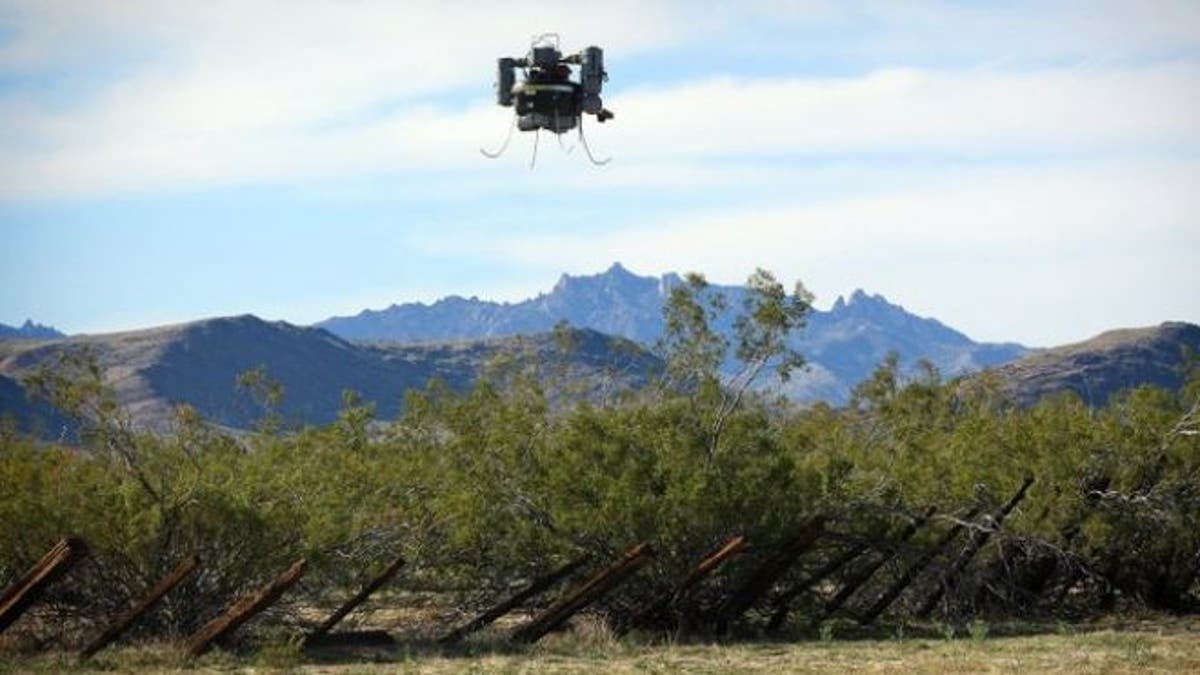
April 13, 2013: This photo shows the USGS THawk drone being used during a survey of abandoned solid waste in the Mojave Preserve. (AP/USGS)
BOISE, Idaho – Scientists in Idaho will be flying military-style drone aircraft over the state's sagebrush sea, not in a bid to find terrorists but to help locate the best habitat for one of West's smallest mammals, the pygmy rabbit.
The flights, overseen by University of Idaho, Boise State University and University of Florida scientists, are meant to help determine whether aerial shots from small, unmanned planes can effectively locate the best areas to reintroduce captive-bred pygmy rabbits into the wild.
So far, a pygmy rabbit population in Washington state has been declared endangered under federal law, though some groups have sought broader protections elsewhere across the West through lawsuits.
With the flights, scientists from the universities will be taking high-resolution digital shots, in color and infrared, over Bureau of Land Management property in Idaho's Lemhi County from June 27-29.
"As part of the effort to save the rabbits from extinction, the test aims to identify the best areas in which to reintroduce captive-bred pygmy rabbits," according to members of the team including Jennifer S. Forbey, a Boise State University professor who will help in maneuvering the drones from a base in the Idaho mountains.
This isn't the first time Forbey and other scientists have taken to the West's skies with drones in their pursuit of helping the rabbits, which are small enough to fit in the palm of a person's hand and have some peculiar habits that have hindered their survival, including the tendency for females to fight off potential male partners.
Starting in 2011, she joined U.S. Geological Survey scientists flying drones over the Idaho desert near Shoshone, to the southwest of this year's target, in pursuit of more information about where these rabbits live. The rabbits' range, which historically covered portions of California, Oregon, Nevada, Idaho, Montana, Wyoming, Utah and Washington, has been fragmented through development, agriculture and grazing.
In 2003, the U.S. Fish and Wildlife Service listed one distinct population of the rabbits, in Washington state's Columbia Basin, as endangered.
Such drone flights haven't been without detractors, however.
As more and more groups -- from law enforcement agencies to utilities with sprawling transmission systems -- opt for the aircraft to help them cover broad, unpopulated expanses, leery Idaho lawmakers during the 2013 Legislature debated limits on the activity, out of concern drones might be used for spying on people going about their lawful business.
A law passed just this April forbids anybody in Idaho from using a drone to conduct unwarranted surveillance -- including media paparazzi who might be tempted to fly over some celebrity's estate in the resort town of Sun Valley to take unauthorized photos.
The university scientists say they've got all the approvals for their rabbit-habitat hunting flights.
The University of Florida Unmanned Aircraft Systems Research Program, a partner in this research, has received go-ahead from the Federal Aviation Administration, provided scientists stay over unpopulated areas and don't stray beyond a one nautical mile radius from the controller on the ground.

